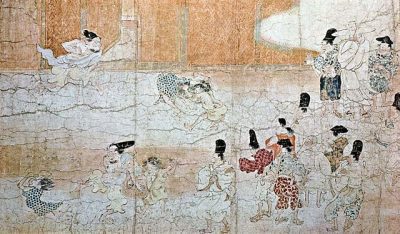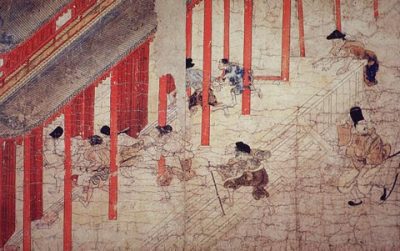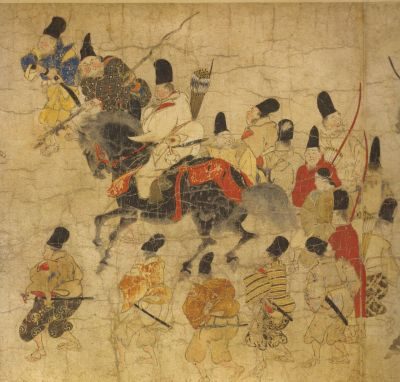Art of Tokiwa Mitsunaga and the backdrop of political intrigues in twelfth-century Japan
Lee Jay Walker
Modern Tokyo Times

The period 1156 to 1185 witnessed many important events in Japan that would ultimately lead to a new period in Japanese history. In simple terms, the clash between the clans of Taira and Minamoto would witness new power concentration dynamics under Taira. However, ultimately, the clan of Minamoto would emerge victorious in 1185 when the Taira clan capitulated.
Tokiwa Mitsunaga, a notable Japanese artist of the twelfth century, witnessed these intrigues during the later stages of his lifetime. Indeed, he is reported to have passed away in the same year that Minamoto took power. This applies to the Kamakura Period (1185-1333) that officially came into being in Kamakura in 1192.

One can only imagine how Mitsunaga viewed the power dynamics that were shaping Japan. After all, the world of the Heian Period (794-1185), in simplistic terms, is famous for the influence of the Middle Kingdom (China), Buddhism, and Taoism. Equally important, tensions inside the Middle Kingdom enabled Japanese culture to become more independent (kokufu bunka) and this, in turn, boosted art, literature, poetry, and other areas of Japanese high culture.
However, one negative fact was the gradual rise of the samurai warrior class that would ultimately lead to the feudal era. Hence, feudal clans and new power dynamics were engulfing the world of Mitsunaga.

In an earlier article, I comment, “Mitsunaga is fondly remembered for the “Annual Rites and Ceremonies.” This work applies to sixty handscrolls that were horizontal. Hence, people in modern times can see a glimpse of courtiers responding to natural ceremonies and chores that took place inside parts of the palace.”
I also stressed, “Sadly, the original “Annual Rites and Ceremonies” and “Imperial Procession” were lost to fire. However, as the Phoenix rises, then the same applies to the art of Mitsunaga because esteemed artists would copy from what was handed down. Hence, attributes and a clouded history connect people in modern times with the twelfth-century artist Mitsunaga.”

Overall, one can only hazard a guess the fears or hopes of Mitsunaga with the ending of the Heian Period in 1185 and the start of the Kamakura Period during the last stage of his life. Hence, feudalism and the bakufu (tent government) would start the next period of Japanese power dynamics based on the warrior caste (samurai). Therefore, the art of Mitsunaga provides a glimpse into the changing of the guard in Japan.
PLEASE DONATE TO HELP MODERN TOKYO TIMES

Modern Tokyo News is part of the Modern Tokyo Times group
DONATIONS to SUPPORT MODERN TOKYO TIMES – please pay PayPal and DONATE to sawakoart@gmail.com
http://moderntokyotimes.com Modern Tokyo Times – International News and Japan News
https://www.pinterest.co.uk/moderntokyotimes/ Modern Tokyo Times is now on PINTEREST
http://sawakoart.com – Sawako Utsumi personal website and Modern Tokyo Times artist
https://moderntokyonews.com Modern Tokyo News – Tokyo News and International News
PLEASE JOIN ON TWITTER
https://twitter.com/MTT_News Modern Tokyo Times
PLEASE JOIN ON FACEBOOK